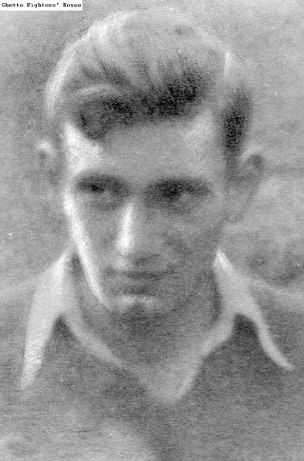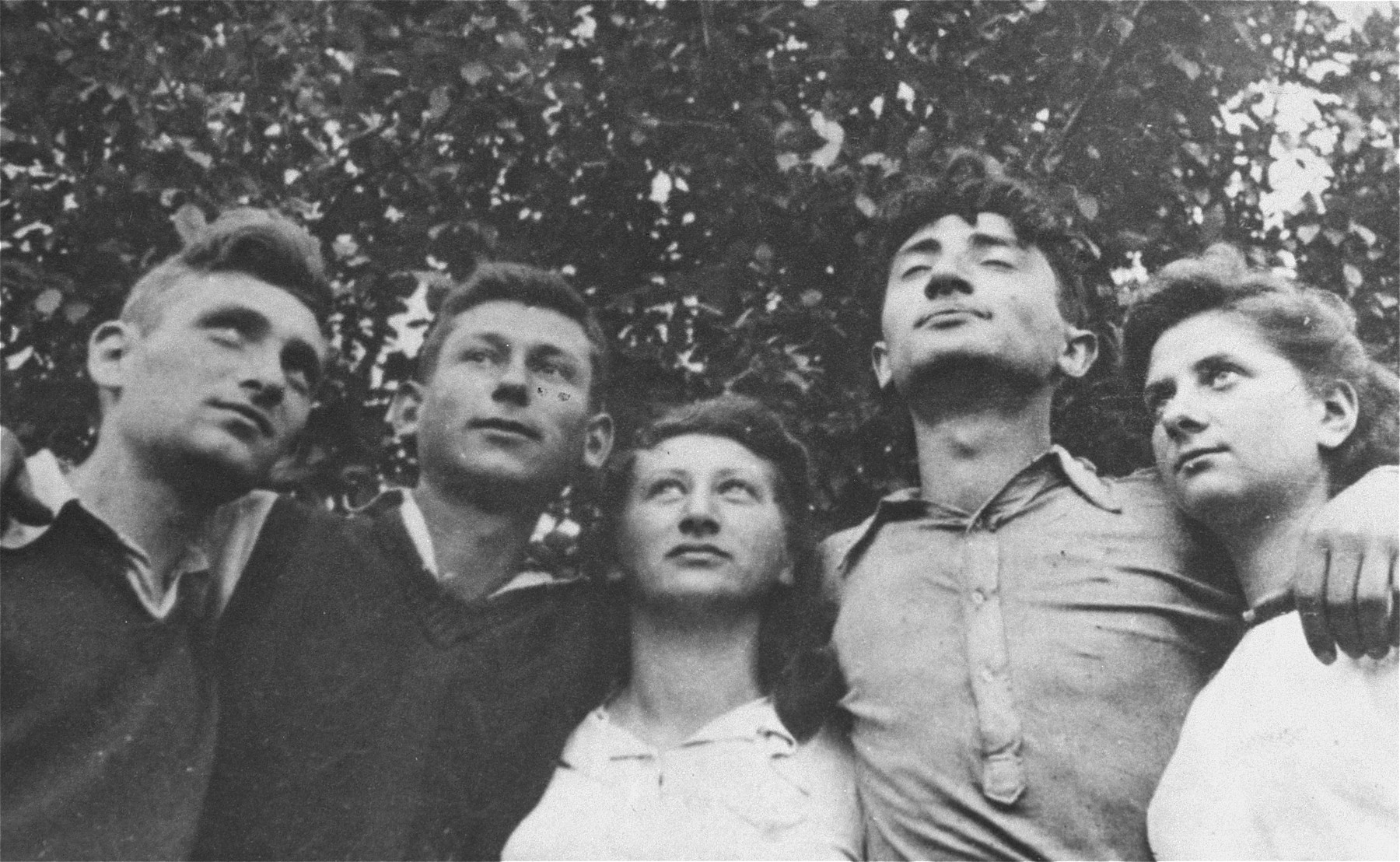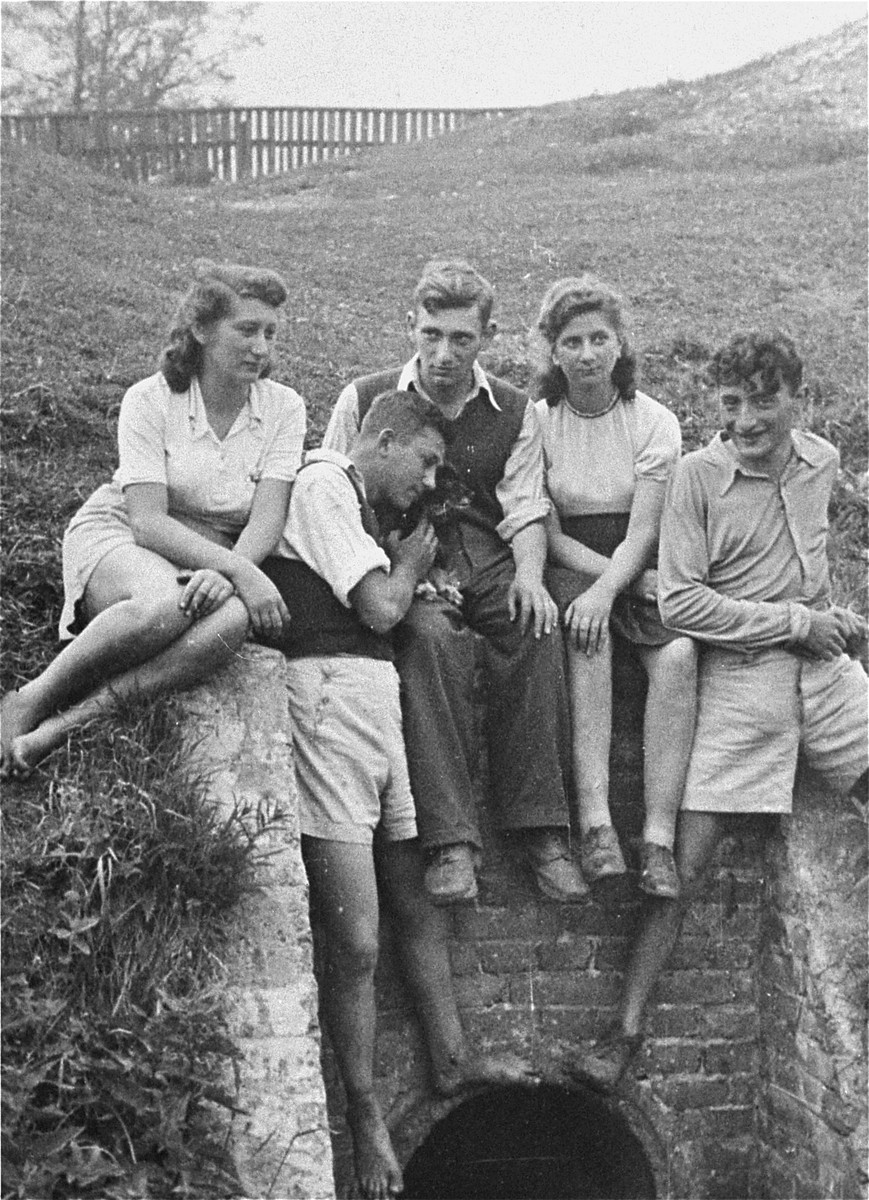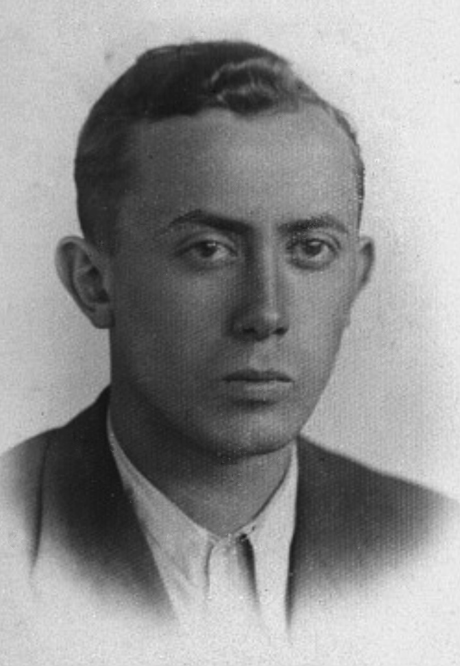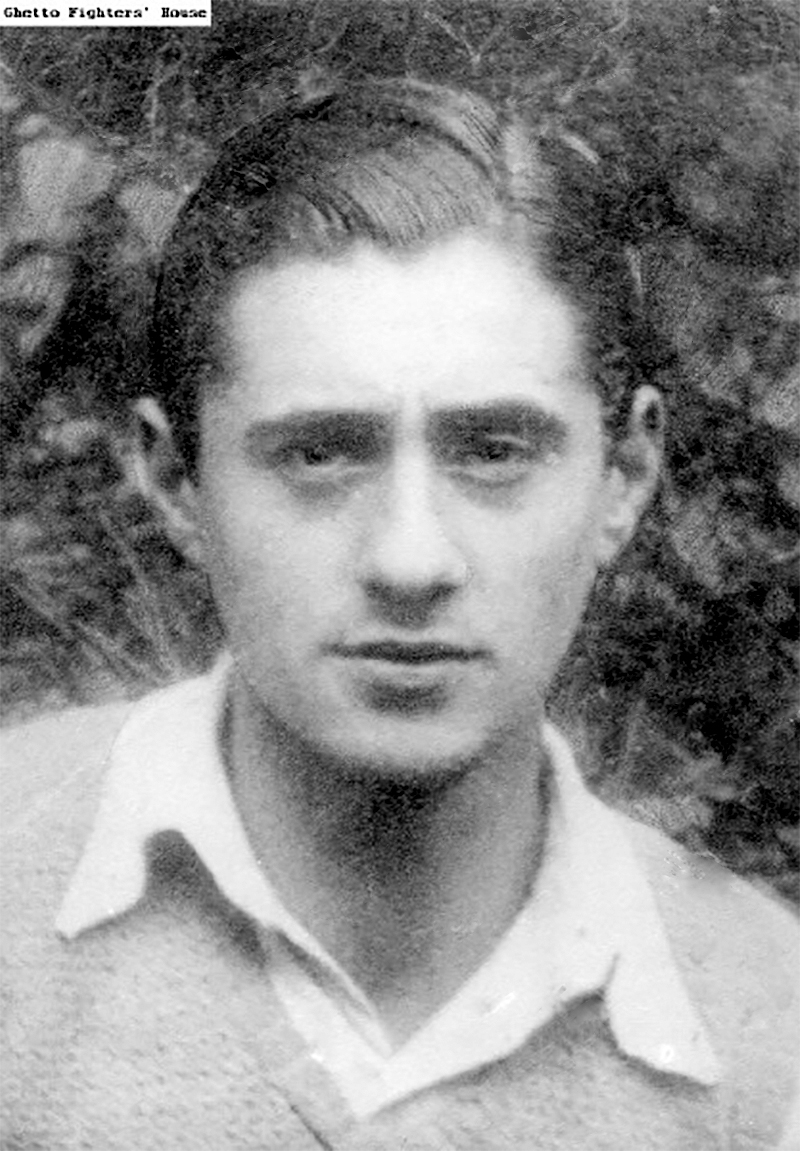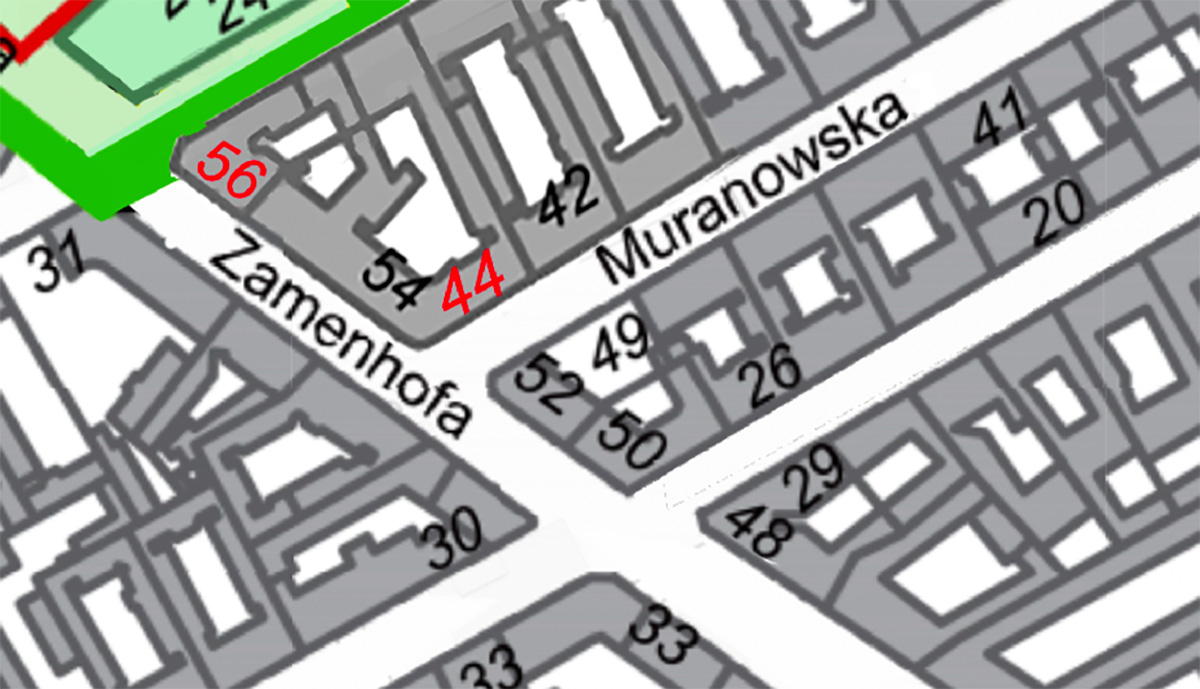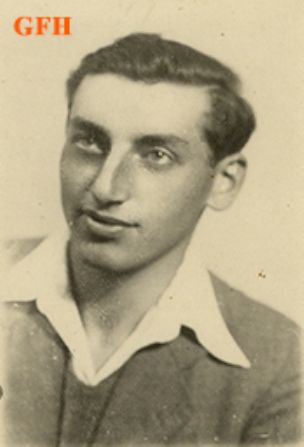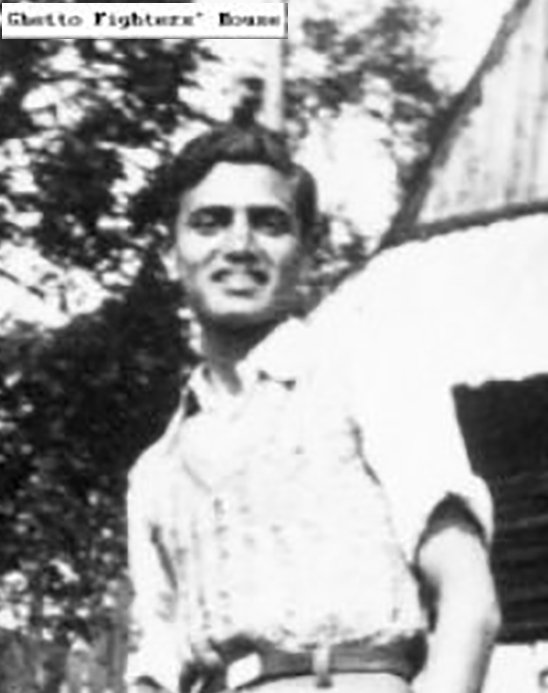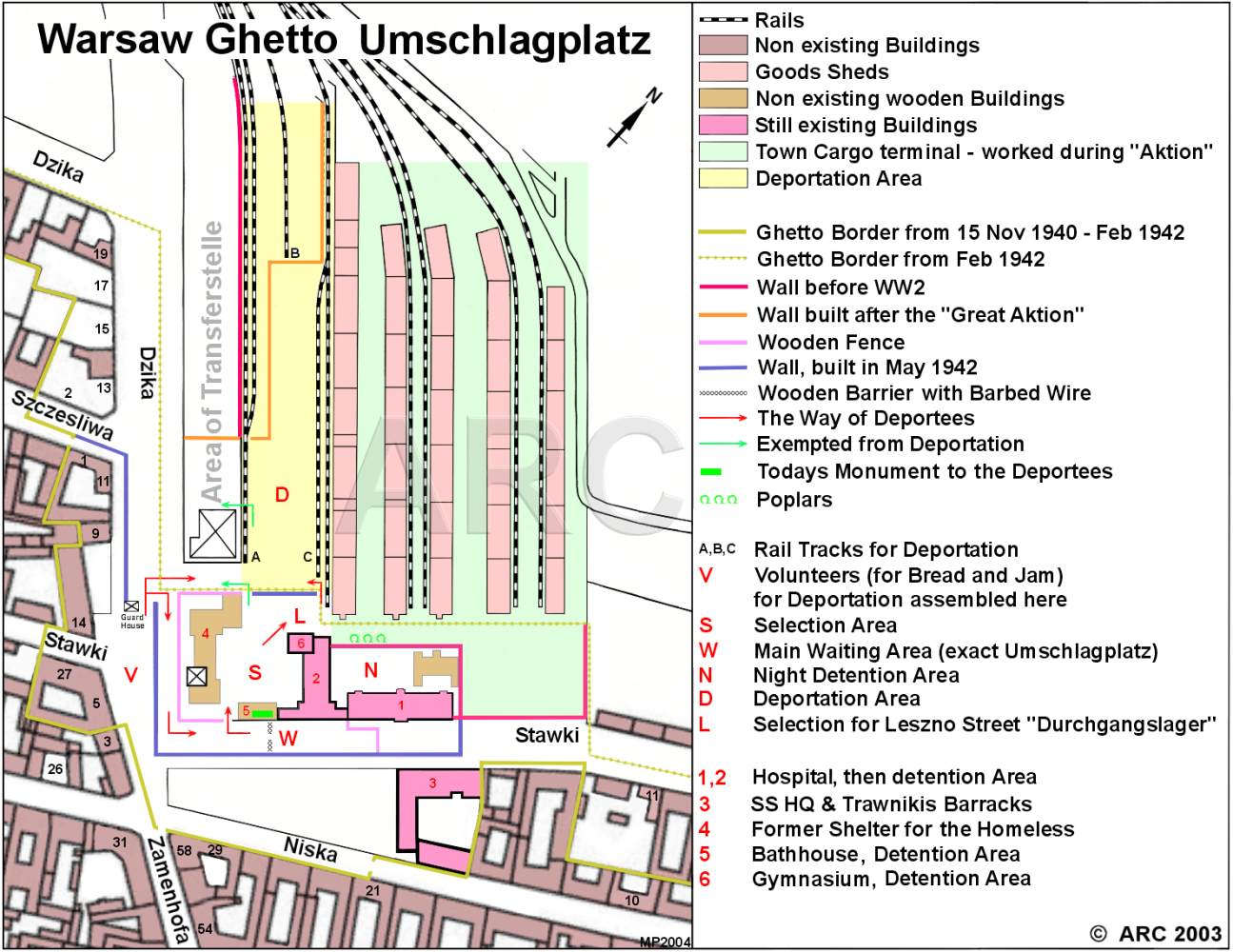Yitzhak Sukenik - Koza - Part 1
Early Years to the
First Resistance in the
Warsaw Ghetto
January 18th 1943
1920 - 39 Yitzhak, also written as Itzhak, Icchok was born in Warsaw in 1920 to Mayer & Cesia (nee Lament) Sukenik. In his teens he learned metalwork at the vocational school on Stawki Street. Just before the war, the streets of Warsaw saw a rise in anti-semitic assaults. Koza would lead his friends to protect of Jewish pedestrians.
Before the war he served in the "Military Training" of the Polish army having achieved the rank of sergeant, and was known as a distinguished marksman. 1, 21939 September. Yitzhak's mother and younger brother Srul were killed in the Nazi bombardment of Warsaw. Shortly after the start the war he went to Chavat Hachshara in Pniewy( Pinne), near Warsaw. [This was a pioneering training farm to learn about agriculture and life on kibbutz, in preparation for going to Israel] 1940 Warsaw Ghetto created between October and November 16 1941 In August his elder brother Moszek died (most probably of typhus) and in November his father also of typhus. At this point with all his immediate family gone, Yitzhak swore revenge on the Germans, and it became his sole focus. The cheerful lad, who always had a smile on his face, became a bitter, revengeful man. 1
The permit was obtained, and a small group moved to the Zarki farm. The new collective included approximately twenty young adults. For many of the group this experience promised more and better food and possibly preparation for a future life in Palestine. 3
In September, 1941, along with several members of his group, he managed to escape the ghetto and attempted to return to their movement training farm Kibbutz- Maapilim, near Czestochowa. When they failed in the attempt, they decided to establish an agricultural- training farm on land belonging to a Jew from the town of Zawiercie in the Czestochowa area.1942 Five members of the Hashomer Hatzair Zionist collective on their farm inZarki.
Pictured from left to right are: Itzhak Suknik, Amnon Klukowski, Chagit Elster, Avram Zilbersztajn and Lodzia Hamersztajn.
Photo: United States Holocaust Memorial Museum, courtesy of Leah Hammerstein Silverstein1942 Five members of the Hashomer Hatzair Zionist collective on their farm in Zarki.
Chagit Elster, Amnon Klukowski, Itzhak Suknik, Lodzia Hamersztajn and Avram Zilbersztajn.
Photo: United States Holocaust Memorial Museum, courtesy of Leah Hammerstein Silverstein1942 July: Z.O.B (Jewish Combat Organization) was formed.
The group on the Zarki Farm were visited by Arie Wilner, a leader of the Warsaw ghetto underground, who talked to them about resistance and self-defense.
Unable to produce enough food to sustain itself, the kibbutz soon disbanded. Most of its members moved into the Czestochowa ghetto, where they continued to live as a collective, but Yitzak returned to the Warsaw Ghetto in order to take an active part in "Ha - Shomer ha - Tsa'ir and the Jewish Fighting Organization (Z.O.B).
Yitzhak's name in the underground was Koza (Polish for goat). When this name as adopted is not known but this comment may give a clue:
"Most of those who fought in the Warsaw Ghetto uprising were in their 20s. Their youth is attested to by the fact that some of them were known by their childhood nicknames rather than by their real names. Thus, for example, Yitzhak Sukenik went by his nickname "Koza," or "Goat." 4
Armament Production in the Ghetto
When the Z.O.B was formed in July 1942 they had no arms. By August they received their first shipment of weapons from the Polish side, five pistols and six hand grenades. It did not improve much in the months that followed and more often than not the the weapons were in a poor condition and were only partially useable. 5
Based on Yitzhak's initiative, a workshop was founded in the ghetto to prepare hand grenades and to repair small weapons. By the end of 1942, he became one of the most important producers of weapons, heading two workshops, whose production reached a significant volume of up to 50 grenades a day. 1,6
In the book " Pinkes Varshe" , the author, Pinye Kats, wrote:
"... This is precisely why we have to mention, with special recognition, those from the Jewish Fighting Organization who were specially occupied with producing in the ghetto proper the primitive grenades and molotov cocktails, about which S.S. General Stroop speaks with such hatred – the unforgettable fighters: Moshe Jagodzinski, Michal Klepfisz, Yitzchak Sukenik, and many others." 7
Arms Training Sessions at Muranowska 44
Besides the arms manufacturing, Yitzak was giving arms training to other fighters.
Chaim Primer's testimony from "Out of the flames".
"We would come twice a week to the house of Lotek Rotblat ( one of the founders of the Akiva movement and commander of one of its combat regiments) on 44 Muranovska Street for weapons training. The house was one of the houses designated for Judenrat officials. Lotek was a clerk for the Judenrat. That's how he got the apartment.
The first lesson was attended by Krisha, Zalman Holland, Rivka Pasamonic, another guy, and a few girls whose names I fail to recollect, and me. We sat in the room waiting for our instructor while Lotek went out to show him the way. After a while, he returned with a short guy, firm but agile, with an honest face and clever eyes. His nickname was Koza, and he belonged to HaShomer HaTzair.
In the first lesson, we learned about the pistol's parts, their names, and its mechanics. We disassembled and reassembled the pistol. We competed amongst ourselves to see who would be the quickest to do so. We continued with these drills until we were well acquainted with the pistol.
Koza was cheerful and witty, full of jokes. To get us to treat the weapons cautiously he told us that they're prone to let out a "wonder shot" once a year. This can happen even if it's not loaded and without anyone pulling the trigger. One can never know when this mysterious shot might happen."
"If you ever hear a gunshot and the person holding the gun swears he did not pull the trigger, then you witnessed a wonder shot," said Koza.
The house was also Lotek's mother's residence. She was a noble woman, once the manager of an orphanage for the city council. She even adopted a daughter from that institute. We would always meet them, mother and daughter, sitting in the hall when we came. Now and then she would go out to the stairway. I later understood she stood guard for us, so that no-one would surprise us while we were training.
The house had a connection to the house in 56 Zamenhof Street, where one of the fighting units had settled. We weren't told anything yet about actual activities, and we didn't get to know other fighters, apart from our group. We also didn't know at that time that the weapons were brought in through the attic of the house on Zamenhof Street."
Warsaw Ghetto Streetmap 4 showing Lotek Rotblats' house
at 44 Muranowski and the connection to the fighting unit at 56 ZamenhofaOne evening, Koza said that he thinks we have studied the pistol well and it is time to see our first shot. He took his Parabellum, walked over to one of the house's corners, aimed at the ceiling, and pulled the trigger. The room was shaken by the loud shot. We stood there, staring, mouths agape, bewitched.
We then began training with hand grenades.
In another account from "The Bravest Battle" by Dan Kurzman
"It was in November 1942 that Chaim Frimer first made contact with the Z.O.B. By a chance encounter he met up with a childhood friend Israel Canal who suggested that they meet up the following evening at the corner of Zamenhof and Muranowska. Chaim had vaguely heard that the Jewish underground had been formed. He guessed that Israel was a member and was thrilled at the thought that he might get a chance to fight before he died.
They met the following evening and walked into a courtyard to talk. As Chaim expected his friend told him about a new resistance organization that had few weapons. Chaim agreed readily to join. He now had to recruit five men in his factory who would eventually become fully fledged ZOB members.
From that time on, the group gathered twice a week for weapons training in Lutek Rotblat's house, at Muranowski 44, whilst Lutek's mother, Maria, with one of her orphans beside her, sat guard in the corridor by the door.
Finally the long-awaited moment came. The weapons instructor said that his pupils now knew enough about pistols, and he marked the occasion with a shot in the ceiling. The noise reverberated like a command from heaven , and Chaim and his fellow novices stood amazed and somehow enthralled by the miracle.
They were no longer sheep, but fighters."
Over 250 000 Jews from the Ghetto had been deported to Treblinkla mostly within the period from 23 July to 21 September.
By the end of the year there were only 50 000 inhabitants remaining from the original number of over 400 000 whohad been confined within the walls of the Ghetto since November 1940.
Chaim Frimer (Frymer/Frimmer)
1943
January 18th. The first Resistance
By January 1943 Yitzak had become a member of Mordechai Anielwicz's fighting unit.
On 18 January 1943, Ferdinand von Sammern-Frankenegg (SSPF Warschau) - organised the second phase of mass deportations, following Heinrich Himmler’s orders to remove excess Jews from the ghetto with a planned deportation (Aktion) of 8000 Jews who did not have a work pass.
The Jews believed that the SS had come for all of them. Few responded to the German demands to come to the courtyards and present their work permits. 9
When the SS realised that they could not meet the quota they conducted indiscriminate manhunts and captured 3000 Jews.
Mordechai Anielewicz together with other members of ZOB and ZZW, decided to act.
Mordechai Anielewicz and 12 other members of the ZOB members including Yitzhak, Eliyahu Rozanski and Margalit Landau joined a group of deportees destined for the Umschlagplatz. 10The fighters dispersed along the length of this march, and each of its members singled out one of the soldiers guarding the line. At a given signal, the fighters sprang out of line and opened fire. A short fight, at the corner of Zamenhofa and Niska, followed, with a number of Germans killed and wounded, while others fled. In the confusion, some of the people due for deportation managed to escape. 3
Most of the resistance fighters in the attack died. Anielewicz, who commanded the operation, managed to escape, his life saved by Yitzak throwing two grenades at the SS officers who were pursuing him, one grenade exploded killing two Germans whilst the others ran away. 1
1941 The corner of Niska & Zamenhofa - Niska 31 - Zamenhofa 41
Source of photo: fotopolska.euTuvia Borzykowski, who witnessed this episode, recorded in his book "Between Tumbling Walls":
“ At 58 Zamenhof Street in the Dror commune we saw through the windows a group of Jews being taken to the Umschlagplatz, among them members of the Hashomer Hatzair ... only when the convoy reached the corner of Zamenhof and Niska did the Hashomer Hatzair people hurl grenades at the German guards and the members of the S.S special task force. Several of them fell, the others ran for shelter, and the entire convoy fell apart.
The fighters set up a barracade in a little house on Niska street and held it against the German reinforcements which soon arrived. The Germans set it afire.The fighters inside continued firing until the last bullet.
Though the unit was destroyed, the battle on Niska Street encouraged us. For the first time since the occupation we saw Germans clinging to walls, crawling on the ground, running for cover, hesitating before making a step in the fear of being hit by a Jewish bullet...”
~
In a leaflet distributed on January 18th. Pawel Finder wrote "On January 18, 1943, the occupation forces proceeded to the final stage of liquidating the the Warsaw Ghetto where 35,000 Jews still live and work for the Germans. This time the Jewish populace, led by our comrades, defended themselves with grenades and stones."
As a footnote to this entry in the book "Uprising in the Warsaw Ghetto'"on p.123, the author Ber Mark wrote:
" The Jewish Fighting Organization led the January self-defense action. Key commanders and fighters there included Mordechai Anielwicz, Zechariah Artszteyn, Margarit Landau, Benjamin Leibgot, Abraham Feiner, and Itzhak Sukenik. "
Between the First Resistance and the Uprising ( January 22 - April 19 1943) The fighting continued for another 4 days, then there was a lull in the German raids which gave the resistant fighters time to organize and arm themselves, and the remaining population of the ghetto took advantage of this time to build bunkers. There was no doubt in their mind that the Germans were preparing to liquidate the Ghetto and the only hope of surviving was to hide and store supplies to keep themselves alive for as long as possible.
The second part of Yitzhak's story will cover the period from April 19th, the day of the Warsaw Ghetto Uprising, until his death whilst trying to escape the Ghetto on May 8th.
Sources noted above
1 "Devastation and mutiny of Warsaw Jews" by Melech Neustadt Print Achdot Inc. Tel-Aviv 1947 2 "Varshah" (Warsaw) by Gruenbaum, Yizhak 3 "The Jews of Warsaw, 1939-1943: Ghetto, Underground, Revolt " by Yisrael Gutman 4 HAARETZ REVIEW of "Obczytanie Listy" ("A Reading of the Scroll") by Anka Grupinska 5 "Resistance" by Israel Gutman 6 "Dos bukh fun gvure" (The Book of Heroism) by Bernard Mark 7 "Pinkes Varshe (Memorial book of the Warsaw Jewish community)" by Pinye Kats 8 Polish Centre for Holocaust Research 9 "The Ghetto Men" by French L. Maclean 10 Biography of Mordechai Anielewicz Translation of Yiddish Sources - Rivka Schiller
Other Sources
Yad Vashem Testimony for Cesia, Yitzhak's mother. Yad Vashem Testimony for Srul, Yitzhak's younger brother. "Obczytanie Listy" ("A Reading of the Scroll") by Anka Grupinska "The Bravest Battle" by Dan Kurzman "Out of the flames" by Chaim Primer' POLIN Museum Warsaw The Ghetto Fighters' House
